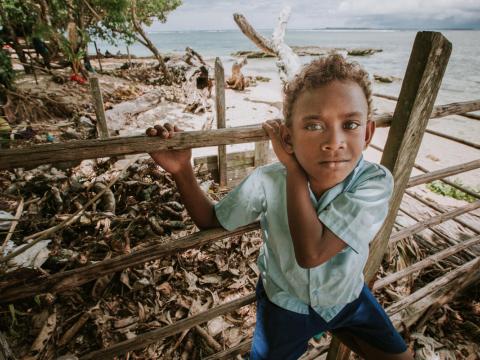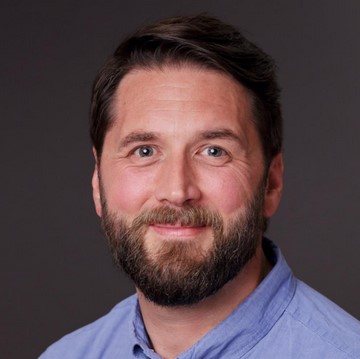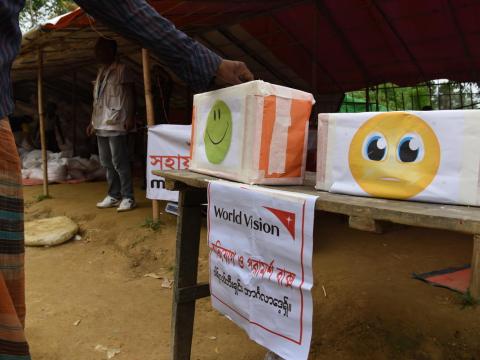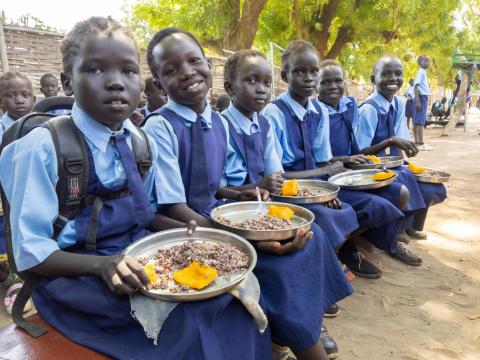
The great injustice staring us in the face
By Maurice Sadlier
My bookshelf is nothing if not varied. Sandwiched between copies of The Cairo Trilogy, Daisy Eat Your Peas (a classic) and How To Save Your Planet One Object At a Time, are several copies of The Universal Declaration of Human Rights. One of them is an adaptation for children and contains this version of Article 1 of the declaration:
“All People are born free.
All people are born equal and so have equal rights.
People can think for themselves and understand what’s going on around them.
Everyone should act as brothers and sisters.”
It’s powerful in its simplicity. Unfortunately, it’s also a distant reality when it comes to climate change. Not all are treated equally, its impacts affect some vastly more than others, and so often those who are least responsible and most vulnerable are the worst and most affected. The Intergovernmental Panel on Climate Change reported that “people who are socially, economically, culturally, politically, institutionally or otherwise marginalized are especially vulnerable to climate change”. Well, this describes the vast majority of people World Vision works with, particularly children in fragile contexts. This is the injustice of climate change. And it’s one of the reasons I am delighted to work for an organisation that takes a climate justice approach to climate change, and puts human rights at the centre of our response.
A colleague recently commented that the concept of climate justice is still not well understood. This took me slightly by surprise, but they are right that there are many interpretations of what climate justice means. However, after three and a half years working with and learning from Mary Robinson at the Mary Robinson Foundation – Climate Justice, I have a very clear concept of what climate justice means to me. And why everything we do has to be geared towards achieving it.
Climate justice brings together human rights, development and climate action. It reflects how these three areas interact and are interdependent. Most importantly, it is an approach that puts vulnerable adults and children at the centre of the climate crisis and requires that their human rights are respected and upheld as we respond.
I’m not sure why we aren’t using the term climate justice on a daily basis as development and humanitarian practitioners. The components and concept feature in our analysis of the drivers of fragility, and present in how we approach our response to ending extreme poverty. Here are three ways I have seen the links between climate change and human rights:
- Climate change is stomping all over human rights, particularly for people living in situations of extreme poverty. On my first trip to Sierra Leone I visited Sherbro Island, perched on the Atlantic Ocean and reached by an hour-long boat journey. There are two vehicles on Sherbro – ambulances in the local hospital – and no power supply so the carbon footprint of the 28,000 inhabitants is negligent. They do not use the term climate change – they talk about growing seasons changing, crops not growing as they normally do, fishing grounds being washed away by increasingly frequent storms. The changing climate is making people’s right to food impossible to realise. Our departure was delayed by nearly two hours due to torrential downpours. I was travelling in what used to be the dry season. “We can’t depend on that anymore,” my colleague said. So would happens if a pregnant woman in need of an emergency delivery needs to get off the island when one of the increasing number of severe rainstorms hits? Poverty makes her vulnerable, but climate change is affecting her right to health, and her baby’s right to life.
- Our ignorance or oversight makes the effects worse. When I first arrived in Zambia in 2008 many organisations were supporting smallholder famers to diversify their crops and grow jatropha curcas as a biofuel. At the time it was seen as good for climate mitigation and providing increased income for smallholder famers. However, there was soon anecdotal evidence that in addition to planting on land usually cultivated for cash crops men were planting jatropha on land used by women to grow crops for home consumption. The lack of women’s participation in project design affected children’s right to food. When the jatropha crop failed or market prices dropped, reduced family income affected children’s, especially girls’, right to education.
- We can uphold human rights in our response to climate change. One of the projects I am particularly proud of is Sustainable Actions Uniting Tanzanian and Irish Youth, or SAUTI-Youth which is implemented with World Vision Tanzania and Youth Work Ireland, Galway. Sauti is Swahili for voice, and this project sets out to ensure that the voice of children and youth is included in climate decision making at local level. By upholding young people’s right to participate in decisions that affect them, we are upholding their human rights and ensuring that climate action is appropriate to their needs. This makes it more likely to be successful and bring about meaningful change.
I draw encouragement from Pope Francis’s Encyclical Letter Laudato Si’ where he says: “Let us sing as we go. May our struggles and our concern for this planet never take away the joy of our hope.” It can be disheartening at times to face the existential threat that climate change poses but I find these words encouraging and it inspires me to continue the fight as we turn the tide on this climate crisis.
Maurice Sadlier is Programmes Director at World Vision. Follow Maurice on Twitter at @MauriceSadlier
Universal Declaration of Human Rights: An Adaptation for Children by Ruth Rocha and Otavio Roth (E89 I 19s); United Nations, New York


